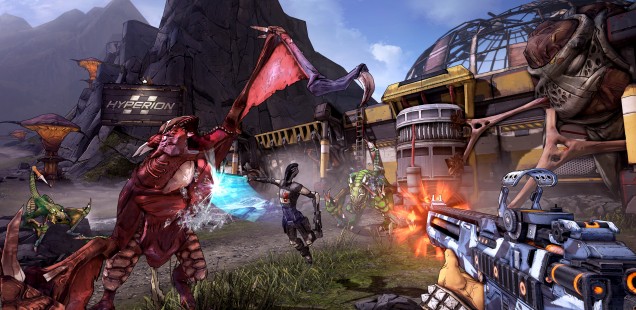
The Mechanical Void: Bullet Heaven
A look at the properties of digital projectiles. By Joshua Ens.
The FPS genre has come a long way since being popularized by Wolfenstein 3D 20 years ago. We’ve jumped from fighting awkward rectangular hitboxes on a single, horizontal axis to bullets flying wildly through true three-dimensional space in the likes of Borderlands 2, Max Payne 3 and the Modern Warfare series. There’s more to this evolution than a mere increase in on-screen shooting though, these three franchises in particular employ a mechanic other games would be wise to borrow: bullet impact.
Like all moving objects, bullets carry momentum, and this force is applied to their target on impact, a fact games still tend to ignore. Enemies dropping on the spot instead of being carried backwards by your high-caliber rounds can ruin immersion for anyone with an understanding of how real guns work, but what’s more by ignoring the physical reality of rifles games miss out on potential tactical depth.
Borderlands 2, for instance, employs a very basic model of bullet impact. Most parts of your enemies are still strangely resistant to gunfire, but each has a certain weak spot where your fire not only does double damage, but will also stagger your opponent and break off pieces of their armor. It’s a singular, binary application of bullet impact, you either hit the spot or don’t, but it adds a gratifying reward for accuracy and is vital to defeat late-game enemies.
The Modern Warfare series and Max Payne 3, on the other hand, use a more realistic version of bullet impact, in which the entire model of your foe is subject to this force. One might aim at their legs to trip them or shoot their arm to sway their aim. Since the player is more vulnerable in these games himself, the goal in using this system is not to maximize damage, but to quickly disable enemies.
Using projectiles as more than a mere damage source is an interesting new trend for a genre many would call stagnant, and we have only seen part of what this system could achieve. Games like Max Payne 3 and Borderlands 2 are a decent first step, but consider the immersive potential of more detailed destruction, the simulation of ricochet and adequate animations for NPCs being hit by high-calibre rounds with impressive stopping force. Consider games featuring kinetic shields that block impact, but not damage, and armor that works the other way around.
A pistol is different from a shotgun, rifle or rocket-launcher, and they should feel different. The way a projectile acts in-game is more than an aesthetic choice, it can determine strategy and pace. Clever use of bullet impact systems can even help players turn the tables in those frantic firefights. By taking a closer look at how games simulate projectiles right now, we can keep moving the genre forward. We have 20 years of evolution behind us, but we can always go further.
Joshua Ens, hailing from Alberta, Canada, is a welder by trade and drunkard by choice.